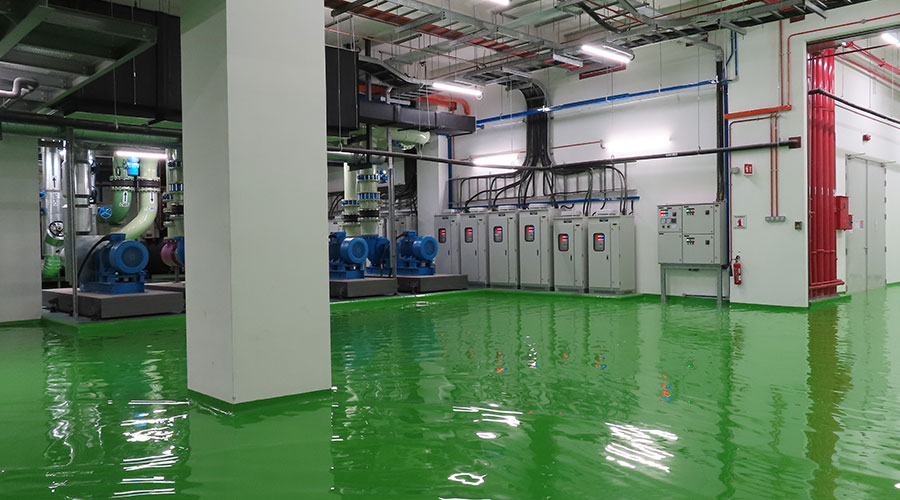Five Keys to Effective Emergency Plans
The scope and intent of an emergency preparedness program should span an array of emergencies.
The COVID-19 pandemic crisis revealed many vulnerabilities in our global economy, healthcare systems, institutions, and supply chains; and shortcomings in facility operations and management were exposed as well. This is not to say that facility management teams did not respond well. As modern-day “McGyvers,” facility professionals are adept at thinking on their feet and evolving practices to deal with the new situation. Nevertheless, while it is impossible to adequately prepare for such unprecedented events, the need for a robust emergency response and preparedness program cannot be overstated.
The likely knee-jerk reaction will be to direct all efforts to prepare for future pandemics. Preparing for the risk of a future pandemic is important, of course, but the scope and intent of an emergency preparedness program should be broadened to span an array of emergencies, such as natural disasters, terrorism, and more localized events, including fire and utility interruptions.
The benefit of this expanded purview is that the fundamental elements of an emergency response and preparedness program can be leveraged for all events, providing a consistent, reliable approach.
The foundation of a comprehensive emergency response and preparedness program includes the following five components:
1. A communication and escalation protocol that includes a list of who needs to be contacted, when, and by whom. Specific personnel (facilities, customers, and contractors), their phone numbers, and back-up staff should be identified and the list reviewed at least every six months, if not quarterly, due to continual organizational changes. Local emergency response entities (police, fire, medical, Department of Homeland Security, Environmental Protection Agency, etc.) should be included along with a policy for engaging such institutions and for media interactions. The intent is to develop a clear and concise means for quickly informing stakeholders of the situation, what the facility team is doing to resolve it, and next steps, all without causing undue alarm. Technology should be leveraged where possible to expedite the flow of information; however, alternate means, such as handheld radios and satellite phones, should be tested and maintained.
2. Emergency operating procedures should be drafted and reviewed at least annually for relevance and accuracy. These procedures should include facility-specific, step-by-step actions taken by staff or contractors to investigate and respond to incidents, such as power anomalies, loss of utility, and HVAC failure. Manual generator start, transfer to emergency power, and closing of outside air intake are other examples of emergency operating procedures that should be considered. A “what-if” analysis should be performed to identify vulnerabilities, resulting consequences, and means to contain, secure, bypass, and restore. Emergency operating procedures should be secured and yet readily available to applicable staff and contractors.
3. Staff should be trained on all related emergency operating procedures, communication and escalation protocols, and applicable processes. Such documents are great tools for onboarding new team members. Additionally, all staff should be required to annually train on them as well.
4. Drills should be coordinated at least quarterly, testing the emergency operating procedures and response against varying scenarios. Table-top drills are adequate for most facilities, but annual “live” drills are the best practice to further vet processes and to communicate the significance of safety and partnership to stakeholders, customers, and public officials.
5. Site/building drawings and one-line diagrams should be organized, reviewed, and made available to applicable staff and contractors. Staff should be trained on the location of shutoff valves, damper controls, breaker feeds, etc. Updating of documents should be incorporated into project and work order processes to ensure accuracy is maintained.
Robust operating and maintenance practices are another key component to ensuring emergency preparedness — indeed, these practices may help prevent and mitigate some incidents. Transitioning facilities from reactive maintenance to proactive maintenance is crucial. The target should be at least 80 percent scheduled maintenance versus 20 percent reactive maintenance; commonly, those percentages are flip-flopped, with only 20 percent scheduled maintenance and 80 percent reactive maintenance. Preventive maintenance should be scheduled, completed, and tracked in a computerized maintenance management system (CMMS) or the like. Employ technology to augment preventive maintenance with predictive maintenance and condition-based maintenance.
It is also worthwhile to implement and maintain a capital replacement program to plan for replacement or refurbishment of assets and systems as they reach end of life and to successfully solicit the required funding. Specific software platforms (or CMMS or integrated workplace management system modules designed for the purpose) can be used to manage condition assessments, forecast replacement, and provide funding scenarios; as a less sophisticated alternative, a basic CMMS can be used to capture, track, and report the needed capital replacement data.
When all is said and done, a facility manager wants to have faith that facility staff, systems, and processes execute as intended when they are called upon, especially in emergency situations. Ensuring that all goes as planned requires forward thinking, diligence, and the upfront legwork to put the necessary components in place. Facility managers should use the current crisis to highlight and justify the need to invest in developing and maintaining a comprehensive emergency response and preparedness program.
John Rimer (john@fm360consulting.com), CFM, is president of FM360, LLC. In more than 20 years of facility management experience, he has implemented and managed facility programs for companies such as Intel, Microsoft, JP Morgan Chase, and Charles Schwab.
Related Topics:












